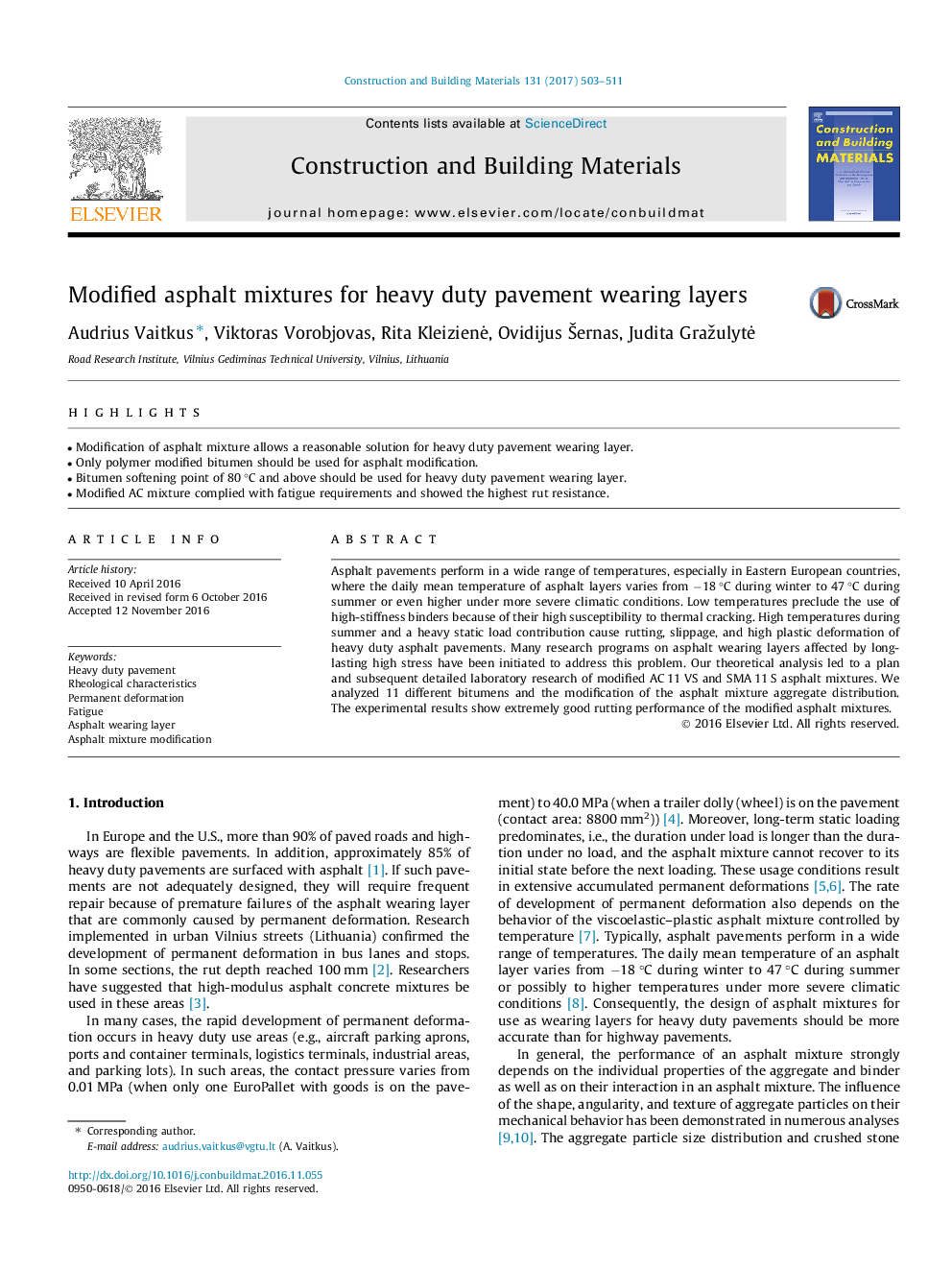| Article ID | Journal | Published Year | Pages | File Type |
|---|---|---|---|---|
| 4913657 | Construction and Building Materials | 2017 | 9 Pages |
Abstract
Asphalt pavements perform in a wide range of temperatures, especially in Eastern European countries, where the daily mean temperature of asphalt layers varies from â18 °C during winter to 47 °C during summer or even higher under more severe climatic conditions. Low temperatures preclude the use of high-stiffness binders because of their high susceptibility to thermal cracking. High temperatures during summer and a heavy static load contribution cause rutting, slippage, and high plastic deformation of heavy duty asphalt pavements. Many research programs on asphalt wearing layers affected by long-lasting high stress have been initiated to address this problem. Our theoretical analysis led to a plan and subsequent detailed laboratory research of modified AC 11 VS and SMA 11 S asphalt mixtures. We analyzed 11 different bitumens and the modification of the asphalt mixture aggregate distribution. The experimental results show extremely good rutting performance of the modified asphalt mixtures.
Related Topics
Physical Sciences and Engineering
Engineering
Civil and Structural Engineering
Authors
Audrius Vaitkus, Viktoras Vorobjovas, Rita KleizienÄ, Ovidijus Å ernas, Judita GražulytÄ,
